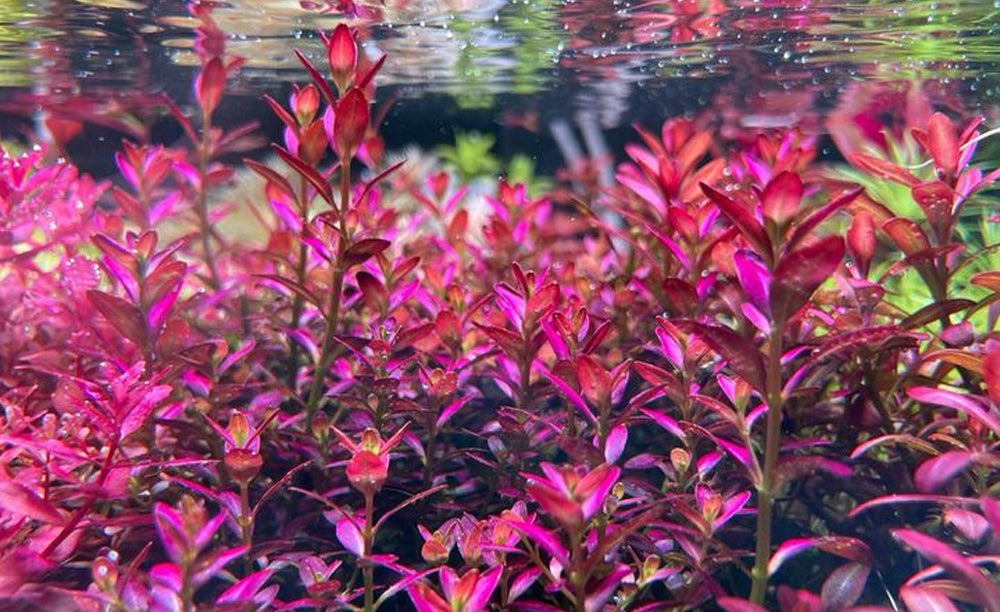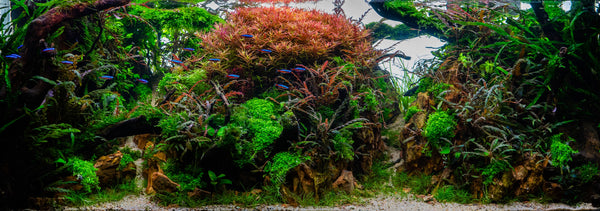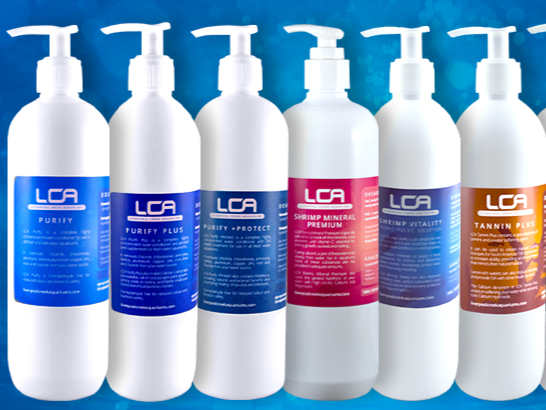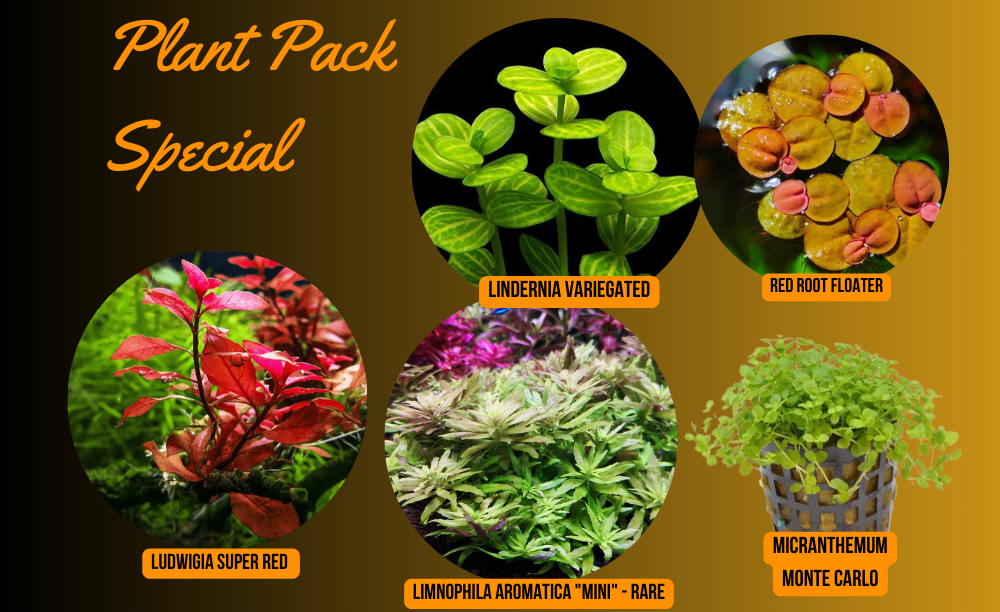Your Cart is Empty
***FREE SHIPPING ON ORDERS OVER $200***
***FREE SHIPPING ON ORDERS OVER $200***
Store

Red Plants & Nitrates
3 min read
Some varieties of “red” plants only reach their full colouration when availability of nitrate in the water column is limited. This is because a lack of nitrogen delays the development of chlorophyll, which is what makes leaves appear green. Without the chlorophyll, red or orange plants can become more intensely coloured.
Species such as Rotala and its variants, Hygrophila pinnatifida and Araguaia, Ludwigia arcuata and Ludwigia brevipes (among others) will only reach this deep red or orange colouration under nitrate limitation.
Nitrate limitation doesn’t work for all red plants - colouration of other species such as Alternanthera reineckii and Ludwigia sp. Red are not affected by nitrate limitation and rely more on other factors such as CO2, light intensity and spectrum.
Additional dosing of Iron enables production of pigments in all aquatic plants which may provide a boost to these hues.
All red plants benefit from pressurised CO2 and intense lighting in the correct spectrum as well – without both of these in sufficient amounts, your colours will not be as vibrant.
Limiting nitrates safely
All plants need nitrates in some amount to grow healthily – it’s one of the three macro nutrients they use for growth. Rotala rotundifolia in particular needs a balanced mix of all nutrients for healthy growth, including nitrates, but with nitrates above 5ppm in the water column it will grow orange instead of red.
With that said, regular fertilisation of the water column is a must to ensure all of your plants are getting the nutrients they need - even if you are using aquasoil. This is because aquatic plants readily absorb nutrients through their leaves and can transport them much faster to areas of new growth when compared to root zone feeding. Adding micronutrients, phosphate and potassium to the water column through fertilisation will ensure every plant is getting what it needs.
The fertiliser you use in your water column should contain little to no nitrates. LCA Advanced Red is formulated especially to enhance red pigmentation, containing lower levels of nitrates and increased Iron, making it an excellent solution. LCA NP Free is another great choice, containing no additional nitrate or phosphate. Heavily planted tanks may benefit from fertiliser with slightly higher levels of nitrates such as LCA Low Tech Complete.
So how can we limit nitrates but keep all our plants alive?
A total deficiency of nitrates will lead to plant stunting, melt, algae – all sorts of problems. So we need to ensure there are still nitrates available for plants to use.
Alongside water column fertilisation of micronutrients, phosphate and potassium, you need to use a quality aquasoil for your substrate or enrich an inert substrate with LCA Root Tabs.
By using aquasoil or an otherwise enriched substrate, you’re ensuring there is always a store of nutrients (including nitrate) available to the root feeding zones of your plants. They can use just the amount of nitrate they need, instead of being supplied with an overabundance of it.
As your aquasoil depletes its store of nutrients over the course of a few months, you can use LCA Root Tabs to replenish it.
Still not red?
Aside from nitrate limitation, medium to intense lighting and pressurised CO2 will greatly increase the red and orange colouration of your plants. You need to use lighting that has an increased red and blue spectrum, and ensure your pressurised CO2 is being evenly distributed throughout your aquarium.
You can still achieve red plants without pressurised CO2, and indeed there are some species such as Ludwigia sp. Red, Alternanthera reineckii that are ideal for a splash of colour in low-tech aquariums.
From The LCA Team
Every Solution For Your Aquarium
Species such as Rotala and its variants, Hygrophila pinnatifida and Araguaia, Ludwigia arcuata and Ludwigia brevipes (among others) will only reach this deep red or orange colouration under nitrate limitation.
Nitrate limitation doesn’t work for all red plants - colouration of other species such as Alternanthera reineckii and Ludwigia sp. Red are not affected by nitrate limitation and rely more on other factors such as CO2, light intensity and spectrum.
Additional dosing of Iron enables production of pigments in all aquatic plants which may provide a boost to these hues.
All red plants benefit from pressurised CO2 and intense lighting in the correct spectrum as well – without both of these in sufficient amounts, your colours will not be as vibrant.
Limiting nitrates safely
All plants need nitrates in some amount to grow healthily – it’s one of the three macro nutrients they use for growth. Rotala rotundifolia in particular needs a balanced mix of all nutrients for healthy growth, including nitrates, but with nitrates above 5ppm in the water column it will grow orange instead of red.
With that said, regular fertilisation of the water column is a must to ensure all of your plants are getting the nutrients they need - even if you are using aquasoil. This is because aquatic plants readily absorb nutrients through their leaves and can transport them much faster to areas of new growth when compared to root zone feeding. Adding micronutrients, phosphate and potassium to the water column through fertilisation will ensure every plant is getting what it needs.
The fertiliser you use in your water column should contain little to no nitrates. LCA Advanced Red is formulated especially to enhance red pigmentation, containing lower levels of nitrates and increased Iron, making it an excellent solution. LCA NP Free is another great choice, containing no additional nitrate or phosphate. Heavily planted tanks may benefit from fertiliser with slightly higher levels of nitrates such as LCA Low Tech Complete.
So how can we limit nitrates but keep all our plants alive?
A total deficiency of nitrates will lead to plant stunting, melt, algae – all sorts of problems. So we need to ensure there are still nitrates available for plants to use.
Alongside water column fertilisation of micronutrients, phosphate and potassium, you need to use a quality aquasoil for your substrate or enrich an inert substrate with LCA Root Tabs.
By using aquasoil or an otherwise enriched substrate, you’re ensuring there is always a store of nutrients (including nitrate) available to the root feeding zones of your plants. They can use just the amount of nitrate they need, instead of being supplied with an overabundance of it.
As your aquasoil depletes its store of nutrients over the course of a few months, you can use LCA Root Tabs to replenish it.
Still not red?
Aside from nitrate limitation, medium to intense lighting and pressurised CO2 will greatly increase the red and orange colouration of your plants. You need to use lighting that has an increased red and blue spectrum, and ensure your pressurised CO2 is being evenly distributed throughout your aquarium.
You can still achieve red plants without pressurised CO2, and indeed there are some species such as Ludwigia sp. Red, Alternanthera reineckii that are ideal for a splash of colour in low-tech aquariums.
From The LCA Team
Every Solution For Your Aquarium
Subscribe
Sign up to get the latest on sales, new releases and more …

Join Us
Join our Facebook group and benefit from the knowledge of
Australia’s largest community of planted aquarium enthusiasts!







